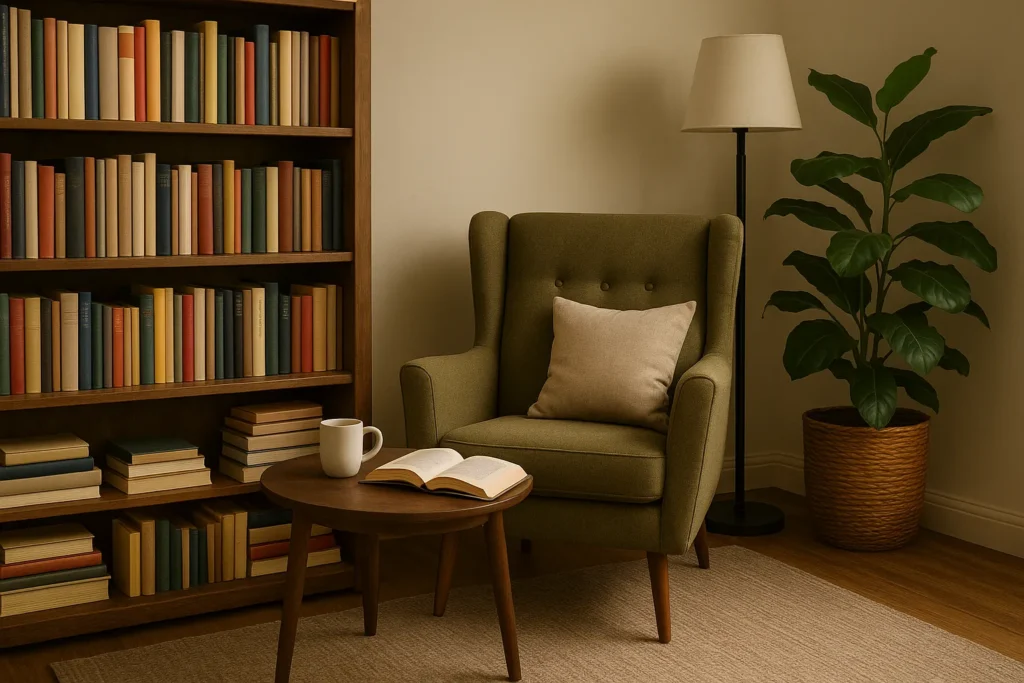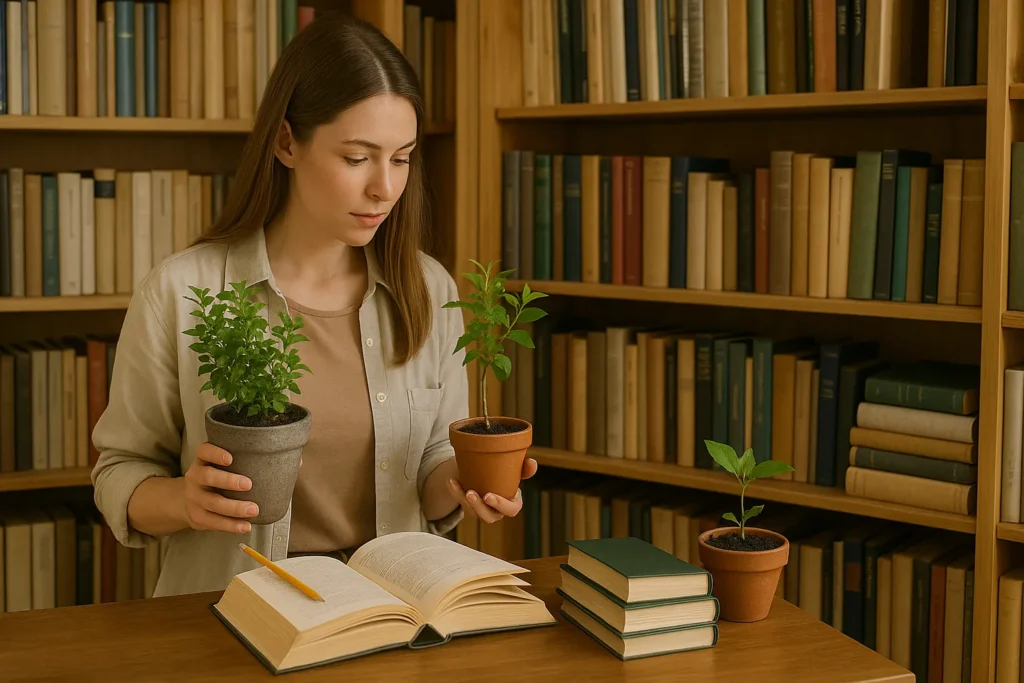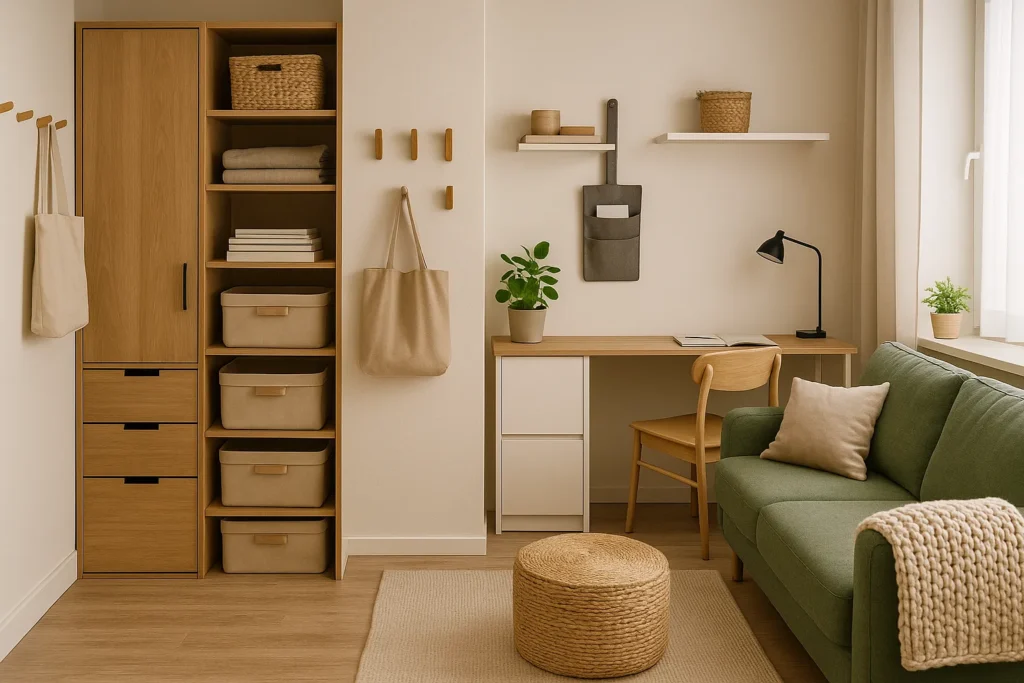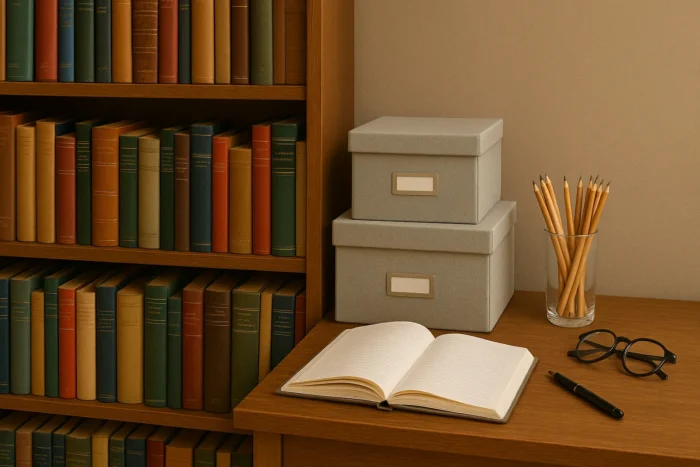Your personal collection used to fit on one shelf, but now it’s spilling into every corner of the house. If that sounds like you, you’re not alone. For book lovers, collecting titles is a joy until it becomes clutter. It’s easy to lose track of what you own, where it lives, or what you’ve already read.
I’ve been there too. I remember pulling the same forgotten paperback from under the couch for the third time and wondering how my cozy reading spot became a chaotic book jungle.
This guide is your step-by-step way out of the mess. You’ll learn how to assess your book collection, set up a home library that works for your space, and organize it in a practical and personal way.
From digital tools to creative shelving ideas, you’ll find real tips that suit your lifestyle, with no fancy furniture or Dewey numbers required.
Assessing Your Book Collection
Let’s break this into steps. You can’t organize what you don’t fully see. Many readers underestimate how many books they own until they gather them all in one place.

Start by pulling every book out of every room. That means checking under beds, digging through bins, and looking behind the couch cushions. Seeing all the books together helps you understand your personal library’s real size and layout.
- Group your titles by category: novels, nonfiction, biographies, cookbooks, or reference books. This gives your collection structure and reveals what types of books take up the most space. For example, you might find that your nonfiction section has quietly doubled over time.
- Look out for duplicates or books you no longer want to keep. It’s perfectly okay to outgrow books (I know…painful!). Passing them on gives you more room and helps someone else discover a new favorite.
- Highlight your favorite books and authors. Create a separate pile or mark them with sticky notes. These are the titles you might want to feature on their own shelf or in a dedicated display.
Pro Tip: Use a simple inventory sheet or a free app like Libib to keep track as you go. It saves time and makes managing your book collection easier in the long run.
Designing Your Home Library Space
What makes a reading space feel like your own? You don’t need a huge room or expensive furniture. The best libraries fit into your life and reflect the way you enjoy your books. Before adding shelves, think about where you enjoy reading.
Your library could live in a spare room, a hallway wall, or a bedroom corner. What matters most is how it feels and functions for you.
- Look for natural light, peace and quiet, and easy access. A comfortable environment makes reading easier and more inviting. If your chosen room gets too much direct sunlight, simple curtains or blinds can help preserve your book covers and reduce glare.
- Make use of what you already have. Try rearranging existing furniture or mixing different bookshelves into a layout that feels intentional. Matching sets aren’t required. Creativity and comfort go further than perfect symmetry.
- Add personal details. A favorite rug, a framed quote, or a stack of treasured books on a small desk can turn a plain area into something special.
Need ideas? Take a look at BookBub’s gallery of creative home library spaces to see how other readers have set up their libraries in different rooms and layouts.
Designing your space is not just about decorating. It helps you build a room that invites reading and makes your books feel like they truly belong.
Deciding How to Organize Your Books
Why is it so hard to find that one title when you need it? If your bookshelf feels more like a scavenger hunt than a system, it might be time to rethink how your books are arranged. A well-thought-out layout helps you locate what you need, explore forgotten titles, and enjoy your book collection more fully.

There are several ways to approach this, and the one that works best is the one that feels natural to you.
- Start with broad categories, then refine from there. Use fiction, non-fiction, reference books, and biographies as your base, then drill down into subcategories by genre, author, or even vibe. You might have a whole bookcase for mystery and thrillers, or an entire shelf for local history and cookbooks.
- Alphabetical order works well if you’re detail-minded. This system can make finding a specific book quick and painless. If you live with others or share books, this method keeps things predictable.
- Try shelving by mood, season, or frequency of use. For example, your favorite books or books you’re planning to read next could live on a lower shelf for easy access.
One helpful tool? Add color-coded sticky notes to test out different methods before committing. That way, you can move things around until your layout feels right.
Cataloging Your Library
Have you ever bought a book you already owned? It happens more often than you’d expect, especially when your collection spreads across different rooms and shelves.
Cataloging helps you keep track of your books, see what you’ve read, and manage your space with less stress.
There’s no right or wrong way to do this. Let’s walk through a few simple methods so you can find one that fits your style.
- Pick a digital tool that works for you. Apps like LibraryThing, Libib, or BookBuddy let you scan titles, organize by category, and include personal notes. These are especially helpful if you lend books to friends or rotate your bookshelf displays.
- Keep your system updated and consistent. You can choose to track everything on an app or in a spreadsheet, but the key is to use it regularly.
- Tag and label your entries. Mark books as “read,” “to read,” “loaned out,” or even note where you got them or when you plan to read them.
A working catalog gives you more control over your book collection and helps you stay organized without relying on memory alone. Once your books are tracked, it becomes easier to think about where and how you want to enjoy them.
Creating a Comfortable, Functional Space
You’ve learned how to catalog your library. Now let’s turn your attention to the space itself. A well-organized system is only part of the experience. Your reading environment matters just as much. The goal here is to create a space where you actually want to spend time with your books.

You don’t need a separate room to make it feel special. Even a small corner can be transformed with the right setup.
- Start with lighting. Reading in poor light can be tiring and frustrating, so aim for natural daylight or add a soft lamp next to your favorite chair. If you’re setting up in a darker corner, look for warm-toned LED bulbs that reduce glare and feel easy on the eyes.
- Think about where you spend the most time at home. That might be the end of the couch, a sunny window seat, or even the kitchen table. Look at where you already reach for books and build from there.
- Add comfort details. A cushion, a blanket, or a small rug underfoot can make a space feel warm and personal without much effort.
Here’s a practical tip: keep one shelf close to your spot stocked with current reads, a notebook, or a pair of reading glasses. Having what you need within reach makes reading more relaxing and keeps your space tidy.
Growing and Curating Your Collection
Not every book belongs on your shelf forever. A strong personal library grows with intention. Think about what kinds of books you want to keep adding. Maybe it’s adult fiction, history titles, or nonfiction that reflects your current interests. This keeps your collection purposeful, not random.

Explore Smarter Ways to Add Books
You don’t have to buy everything brand new. Local bookstores, library sales, and community book swaps are great ways to grow your collection on a budget. They’re also perfect for discovering books you wouldn’t normally pick up.
Keep Track of What’s Coming In
Whenever you find a new book, add it to your catalog, your wishlist, or even a simple note in your phone. Tracking what you own makes it easier to avoid duplicates and keeps your growing collection manageable.
Use a Shelf as a Soft Limit
Here’s a simple trick: set aside one shelf just for unread titles. When it starts to fill up, pause new purchases until you’ve read or passed on a few. This creates a natural balance and helps you stay connected to what you already have.
Maintaining Your Library
Your home library is always evolving. Books come in, some get loaned out, and others stop serving a purpose. Taking time to maintain your space helps you stay connected to your collection and keeps it functional without requiring a big overhaul.
How often should I tidy up my bookshelves?
Once a week is enough for quick dusting and straightening. A monthly check-in gives you time to put books back where they belong, clear off clutter, and notice any books you’re no longer interested in keeping. Light maintenance keeps your space clean and makes your library more enjoyable to use.
What if I keep forgetting which books I’ve loaned out?
It happens. Use a simple method to track borrowed books. That could be a note in your phone, a dedicated section in your catalog app, or a sticky note on your desk. Just make sure you stick with one method that works for you.
Is it okay to remove books from my collection?
Absolutely. Just because a book made sense at one point doesn’t mean it has to stay forever. Donate it, pass it on to a friend, or sell it. Letting go makes room for titles that better match who you are now.
How can I make my library more interactive?
Try creating a rotating “Now Reading” shelf or feature a themed display each season. You could also host casual book nights with friends or join an online reading group. A personal library doesn’t have to be private. It can be shared, explored, and enjoyed with others.
[Tip] Set a reminder to review your catalog every few months. This habit keeps your records fresh and makes future organizing easier.
Small-Space Hacks & Clever Storage Ideas
Not everyone has one room to dedicate to a personal library. If your books are competing for space with everyday life, you’re in the right place. Here are clever ways to make your collection fit and even stand out in smaller spaces.

Use Vertical Space
Tall bookshelves or wall-mounted shelving can free up your floor and give you room for everything from adult fiction to reference books. Install floating shelves over door frames or windows to maximize height without blocking light.
Tuck Books into Unexpected Places
Look beyond the living room. Entryway benches, bedside tables, or even low cabinets in the kitchen can serve as mini libraries. One shelf in an unused corner can transform into a cozy nook.
Try Multipurpose Furniture
Look for pieces like storage ottomans, cube shelves, or side tables with built-in compartments. These blend into your home naturally and keep books close without creating clutter.
Rotate Your Collection
If space is tight, store part of your book collection in bins or under-bed boxes and rotate them every few months. This refreshes your shelves and gives older titles new life when you cycle them back in.
Label storage bins or baskets clearly so you can find books quickly when you’re ready to swap things out.
Wrapping It Up: Make Your Library Yours
Your personal library should feel like an extension of who you are. It doesn’t have to be perfect, and it doesn’t need to follow strict rules. What matters most is that it works for you and supports how you love to read.
You might follow every step or just one that makes the most sense right now. Either way, the process of shaping your space is what makes it meaningful. Your home library continues to grow and shift along with your interests and the books you choose to keep.
If you’re looking for more inspiration, check out The Library Fanatic for ideas, reviews, and personal stories that celebrate the reading life. You’ll find ways to make your space feel even more intentional and personal.
Set a reminder for six months from now to revisit your layout and catalog. A quick refresh keeps your library feeling current and enjoyable.


